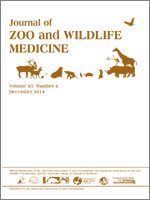The handling of turtles and other reptiles can be associated with risk of pathogenic enterobacteria transmission, mainly Salmonella spp. The aim of this study was to identify the enterobacteria in cloacal swabs of 39 red-eared sliders (Trachemys scripta elegans). Cloacal swabs from 39 captive individuals were analyzed. After sample enrichment in brain–heart infusion broth and 1% peptone water, bacterial isolation was performed through cultivation in blood, MacConkey and xylose lysine desoxycholate agar. Bacterial identification was achieved through conventional tests and automated turbidity analysis. The results indicated the growth of Kluyvera ascorbata (38/39), Leclercia adecarboxylata (37/39), Raoultella planticola (30/39), Citrobacter freundii (20/39), Proteus spp. (15/39), and Escherichia coli (5/39). Salmonella spp. were not detected. The intestinal enterobacteria identified in this study differed from that reported in the literature for other reptiles.
How to translate text using browser tools
1 December 2014
ENTEROBACTERIAL COLONIZATION IN CAPTIVE RED-EARED SLIDERS (TRACHEMYS SCRIPTA ELEGANS)
Rosely Gioia-Di Chiacchio,
Gilberto Nogueira Penido Junior,
Claudia Almeida Igayara de Souza,
Fabiola Eloisa Setim Prioste,
Miriam Siqueira Prado,
Terezinha Knöbl,
Marcia Cristina Menão,
Eliana Reiko Matushima
ACCESS THE FULL ARTICLE
Chelonians
enterobacteria
microbiota
reptile
Trachemys scripta elegans





